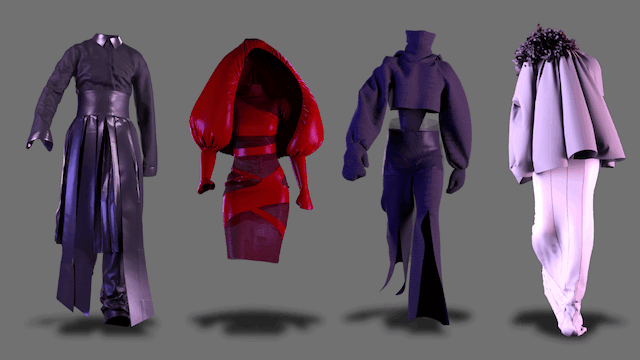
Fashion Interdisciplinary Simulation Technology
project information
Project title: Fashion Interdisciplinary Simulation Technology (FIRST)
Code: INC-UDIT-2025-PRO22
PI Project: PhD student Victoria Vásquez Pecile (victoria.vasquez@udit.es)
Researchers involved: Lara Marín Cerrato, Diana Iglesias, José Manuel Arribas, Victoria Vásquez Pecile.
Objectives
Is the technology ready to achieve an accurate recreation of clothing through 3D? Is society ready to understand it as a highly valuable documentary source?
- Explore and develop the multiple applications of 3D digitisation and visualisation work applied to fashion design, graphic design and video game design.
- Apply these technologies in various areas, such as the improvement of educational processes, integrating innovative tools in teaching, and the advancement of research in digital fashion.
- Creation of various textile devices considering the position and number of sensors to be included in each of the phases of the project.
- Developing new commercial solutions for the industry.

Methodology
Based on multidisciplinary work, the design of the methodology for the digitisation of clothing links and maps out different functions that had not previously been brought together. Taking into account, throughout the process, aspects related to the technique of clothing and the technique of animation and 3D modelling, obtaining results with a higher quality than what is currently developed and which will allow its different applications.
Practical applications
There are various fields in which the results of this research work can be applied. The following are some of them:
- Research impact: publications and alliances that allow not only to disseminate the results obtained, but also to secure funding sources that will boost its expansion towards a larger scale and duration initiative.
- Research in heritage conservation and restoration: a line that allows the project to connect with specific heritage and cultural organisations and funds. This strand ensures that the study remains relevant and adaptable in its results, enabling publications and collaborative projects to be generated that address how digital environments can contribute to the preservation of historical and cultural elements.
- In the field of education, the exploration of impacts and applications in teaching can attract the interest of institutions and organisations that promote educational innovation. Publications on teaching innovation can position this project as a reference in the incorporation of 3D simulation and recreation technologies in the university curriculum, promoting a training model that aligns advanced digital skills with the needs of industry.
Therefore, here is a brief list of these applications related to the project. Concrete objectives and possible areas of application, including:
- 3D design and digital fashion: grant lines in technological development and sustainability in fashion.
- Heritage conservation and restoration: access to national and international cultural and historical conservation programmes.
- Teaching innovation: calls for proposals for the development of digital and educational competences.
- Industry applications: creation of virtual prototypes and digital models for fashion brands or entertainment industries.
- Simulation technology and interactive games: specific funds for R&D in advanced simulation.
- Optimisation and workflow between software: research lines in optimisation of digital resources for industry.
innovation and competitiveness
Specialised Training and Certifications: Given that the use of technologies such as Clo3D, Mixamo and 3ds Max is still relatively new in the field of fashion, there is a high demand for training. The project becomes the basis for developing specialised courses and workshops in garment digitisation, 3D simulation and creation of animated avatars, aimed at both students and professionals in the sector.
Commercialisation of Digital Assets and Virtual Fashion: Digital fashion is a booming market, especially with the growth of the metaverse and virtual and augmented reality (VR/AR) platforms. The project has the capacity to generate digital assets that can be marketed in the form of virtual garments for video games, avatars in metaverse platforms or even in the form of NFTs (Non-Fungible Tokens), opening up new revenue streams through the sale of unique digital clothing.
Production of Virtual Fashion Shows and Immersive Experiences: Another key form of monetisation is to offer virtual fashion shows and immersive experiences to fashion brands, leveraging the simulations and avatars created during the project. Using tools such as Mixamo and Clo3D, fully digital fashion shows can be designed, allowing brands to reduce costs associated with physical events and reach a global audience through online platforms. In addition, the project can be extended to the creation of virtual showrooms offering an immersive and differentiated shopping experience. Partnerships with e-commerce platforms also represent an interesting avenue, providing virtual fitting rooms.







